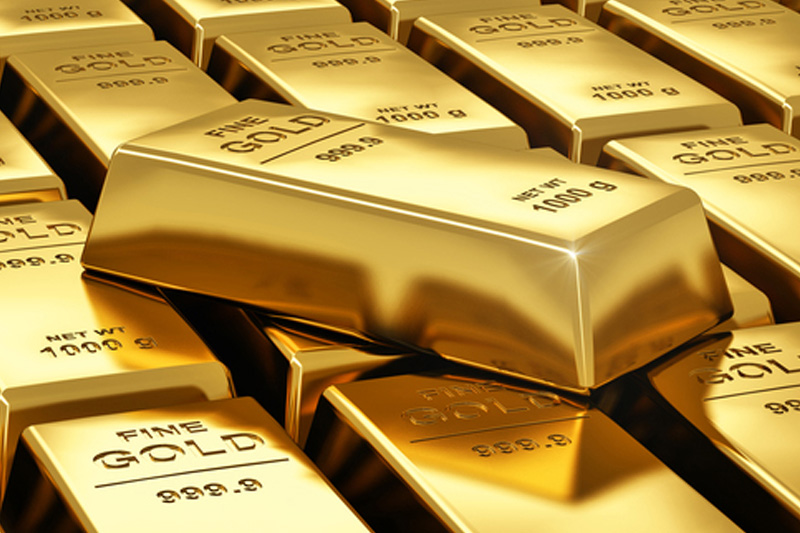Investing.com -- Gold closed relatively flat on Friday, despite a surging Dollar, as subdued consumer inflation data last month did little to dissuade dovish sentiments for an extend period of accommodative monetary policy from the Federal Reserve.
On the Comex division of the New York Mercantile Exchange, Gold for August delivery traded between $1,322.56 and $1,336.50 before settling at $1,327.85, down 4.45 or 0.33% on the session. After surging to 28-month highs last week, Gold has retreated over the last seven sessions, losing approximately 2% in value over the span holding near two-week lows. With the declines, Gold finished with its first negative week since early-June. Still, the precious metal is on track for one of its strongest years on record after soaring roughly 25% year to date.
Gold likely gained support at $1,323.50, the low from June 8 and was met with resistance at $1,391.40 the high from March 17, 2014.
On Friday morning, the U.S. Labor Department said its Consumer Price Index rose by 0.2% in June, amid firming price pressures in services, transportation and medical care. The gains fell slightly below analysts' expectations of a 0.3% increase, one month after rising by 0.2% in May. On a yearly basis, consumer prices rose by 1.0%, one month after rising by an upwardly revised 1.1%.
The Core CPI Index, which strips out volatile food and energy prices, increased by 0.2% in line with consensus estimates. At the same time, Core CPI over the last 12 months has shot up by 2.3%, slightly above annual gains of 2.2% in May. Energy prices in June jumped by 1.3%, echoing similar gains over the prior four months. The relatively soft inflation figures may do little to compel dovish members of the Federal Open Market Committee (FOMC) to approve a short-term interest rate hike in the coming months.
On Thursday, St. Louis Fed president James Bullard, Atlanta Fed president Dennis Lockhart and Dallas Fed president Rob Kaplan all reiterated that the FOMC should take a patient approach with the timing of future rate increases.
Any rate hikes by the Fed this year are viewed as bearish for gold, which struggles to compete with high-yield bearing assets in periods of rising rate environments.
Elsewhere, gold prices were underpinned by favorable data in China after the government reported second quarter GDP growth of 6.7%, in line with consensus estimates and unchanged from the previous quarter. For the quarter, retail sales and industrial output rose 10.6% and 6.2% respectively, outweighing declines of 2.8% in fixed asset investment growth. In the wake of the slowest economic growth in China over the last two decades, economic conditions this year in the world's second-largest economy easing investors' concerns on a potential collapse.
China is the world's largest producer of gold and the second-largest consumer of the yellow metal behind India.
The U.S. Dollar Index, which measures the strength of the greenback versus a basket of six other major currencies, jumped more than 0.55% to an intra-session high of 96.69, amid strong retail sales and industrial production data. The index has still declined by approximately 3% since early-December.
Dollar denominated commodities such as gold become more expensive for foreign purchasers when the dollar appreciates.
Silver for September delivery fell 0.180 or 0.89% to $20.142 an ounce. Last week, the front month contract for silver futures surged above $21.20 an ounce to hit fresh two-year highs.
Copper for September delivery inched down 0.009 or 0.40% to 2.234 a pound.
